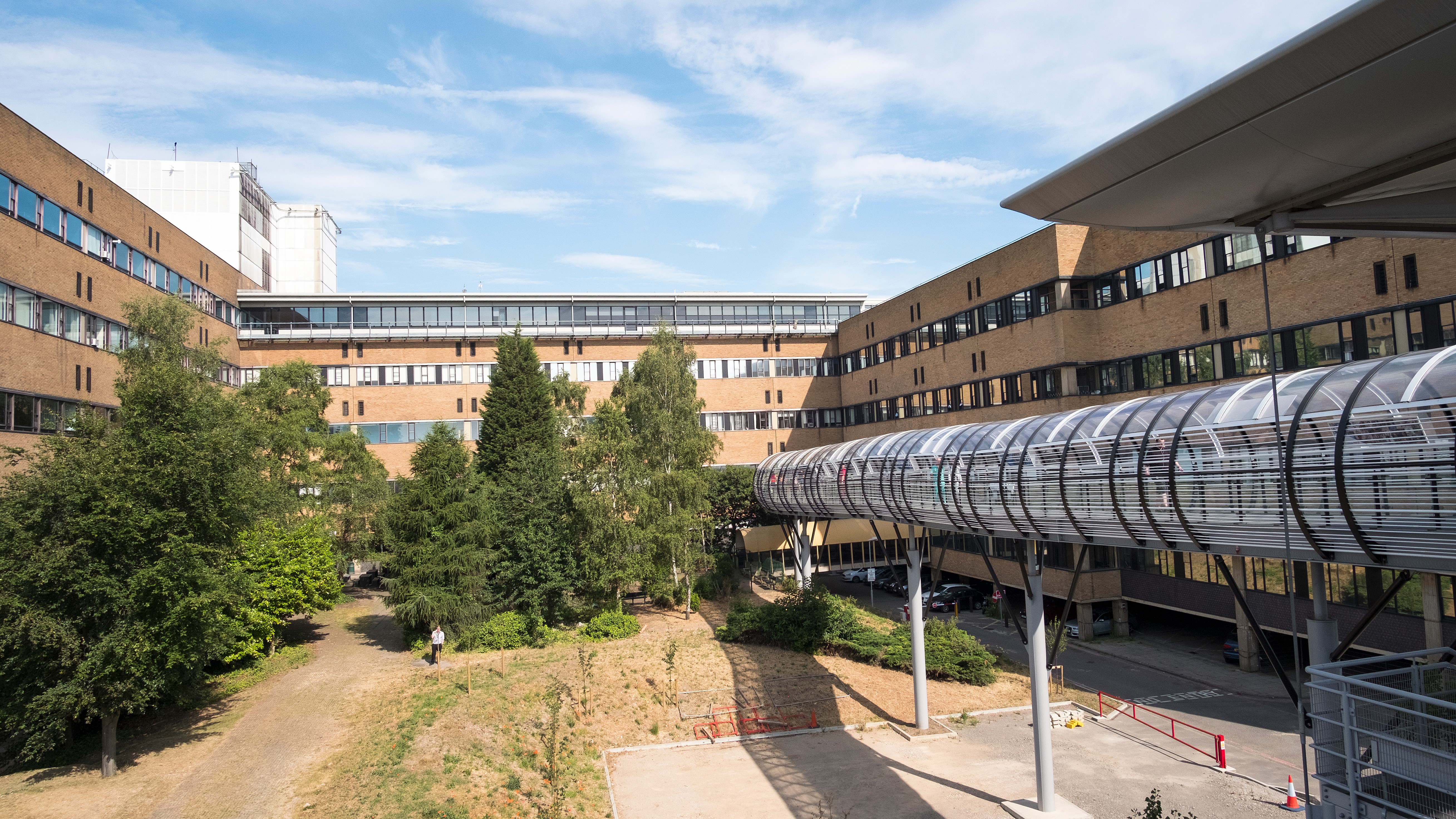
Many projects built for the UK's public sector under the private finance initiative (PFI) are now nearing the end of the 12-year limitation period under which contractors are liable to remedy defects. As a result, many stakeholders are looking to surveyors to ascertain whether these buildings have any outstanding issues.
Originally introduced in 1992 by the then Conservative government, PFI was a procurement policy expanded by the subsequent Labour administration. It was intended as a way of financing and providing major public-sector projects including, among other buildings, hospitals, schools and prisons.
Private funders saw the opportunity to build and run facilities in return for payment from the public sector over an agreed period of time. The cash-strapped public sector in turn gained new facilities, making only gradual repayments at first but with the cost of payments ramping up over time well into the future.
Agreements and liability periods
More than 700 operational PFI contracts are currently in place in the UK. In the next five years, more than 100 of these will reach the end of the 12-year defects liability period. Others are fast approaching the end of a typical 25- or 30-year concession agreement, and the majority of PFI contracts will start to expire from 2025.
In 2020, the current UK government was so concerned that public-sector bodies were unprepared for the end of these PFI agreements that it instructed the National Audit Office to produce the report Managing PFI assets and services as contracts end, published in June that year.
The guidance advises the public sector to make early preparations and collaborate with the private-sector stakeholders. The government's Infrastructure and Projects Authority also offers guidance on how best to prepare for and manage the end of contracts to reduce risk to public-sector bodies.
In April 2021, Sir Robert Naylor, former chief executive of the UCL Hospitals NHS Foundation Trust and author of many reports on the health estate, also warned that NHS Trusts could be sleepwalking into costly disputes with PFI providers as the contracts started expiring.
The principles and guidance offered to address the challenges at the end of the expiry of the contracts must surely also apply at the end of contract liability periods.
The key stakeholders in a typical PFI agreement will include:
-
the funders for the debt created by the initial design and construction
-
an SPV itself, which is a vehicle to channel investors/shareholders to the project
-
a main design-and-build construction contractor
-
a facilities management contractor that runs the asset
-
the public-sector end user, which pays the unitary charge for using the managed facility over the length of the concession.
Each of these has various risks in the agreement, all of which should be closely managed. Detailed technical assessment of the condition of building structure, fabric, and mechanical and electrical elements will be required, as well as ensuring that maintenance, inspections and testing of the building and its services comply with all relevant standards and industry guidance throughout occupation and use.
So as a PFI nears the end of a latent 12-year defects period, building surveyors can be approached by an SPV to carry out an inspection. This is the last chance for the SPV to identify any defects for which the construction contractor may still be liable as part of the latter's design-and-build obligation.
If both design and build latent defects are not identified and passed back to the contractor in time, the contractor will be off the hook. Should the public-sector building user then alert the SPV to any features that are not compliant – whether as a result of poor design, substandard work or lack of maintenance – the SPV may end up with the tab as the contractor disappears into the sunset.
Timely and strategic inspection
The defects inspection is not something that should be left until a month before the end of 12-year period, because the issues can be complex and the costs will likely be significant. For these reasons it is best to begin the process a few years, rather than a few months, before the end of the 12-year period.
Quite often in my experience, intrusive investigations into one suspected defect will lead to the identification of others. The process needs to be strategically planned and implemented, and should be thorough and extensive, with clear, well-presented reporting against the specific contract breach and not just a perceived breach based on the surveyor's experience.
The alleged defects may be attributed to the contractor or the facilities manager, although in some cases the public body using the asset may have commissioned further building work directly during the course of its occupation. This is where the skill of the building surveyor comes in, because they can interpret the findings and identify the responsible party.
This may not always be straightforward from an initial inspection and review of the contracts, as the facilities management contractor may have not undertaken the required maintenance or the authority staff may have cleaned with an unacceptable substance.
This can be a time-consuming task as there can be multiple alleged defects. However, if the work has been started in reasonable time, it gives an opportunity for solicitors to get standstill agreements in place, which extend the expiry of design-and-build contractors' responsibility beyond 12 years. The SPV can then breathe a sigh of relief as the 12th anniversary of practical completion passes, knowing that the responsible party is still liable.
However, building surveyors beware: the standstill agreement will only likely apply to the issues you have identified. Don't assume that any defects you subsequently find will be covered under the agreement, as they probably won't.
Problems posed by passive fire protection
In my experience, it is common to start the defects inspection by surveying the passive fire protection (PFP) measures and the fire-stopping of services through fire-resisting construction elements, in accessible ceiling voids in particular. The quality of this work – whether it was carried out during the original construction or subsequent repairs, maintenance or retrofitted services – can be variable.
It is not unsurprising that many buildings constructed under PFI contracts have had upgrades in data cabling, as technology has moved on in the time since these assets were completed. What is surprising is that these installers do not include allowance in their contracts for making good PFP fire-stopping works through fire-resisting walls after they have threaded their cables through. Neither do they explain that this is essential, fearing that the costs will become too expensive for clients to accept. They may have also laid these cables on trays carrying fire alarm cables, which again contravenes the relevant standards.
If you inspect ceiling voids you may also find evidence of non-compliant deflection head details. These should allow for movement by deflection under load in a building's structure, without compromising the fire resistance of a compartment line built at the top of a plasterboard stud partition; but contractors may have found these just too difficult to understand and install ten years ago.
If you call in your mechanical and electrical engineering colleagues you may also see improperly installed and supported dampers, incorrectly positioned or missing automatic fire detection, and non-compliant fire alarm cabling.
Systemic failures in complex buildings
At first, you may just find a few isolated defects. But once these prompt concern about systemic failures in the building's life safety features, you will want to ask questions about the original fire strategy design, for what is likely to be a complex building.
Simple compliance with Approved Document B will not cut it in such buildings, where the original designers could well have adopted fire-engineered solutions. Consequently, surveyors may need to look beyond the approved document to confirm compliance.
Once you have the fire strategy and compartmentation drawings, you will want to know about the compliance of internal partitions, fire doors, and external and internal compartment wall junction details. You will also want to find out about the whole external wall construction. Until the Grenfell Tower fire, this was considered a way of keeping weather out rather than a potential killer.
If challenged, though, the design-and-build contractor will reach for the documentation from the design sign-off and practical completion stages, authorised by the building control surveyor, fire officer, public bodies' advisers and the independent certifier. The fingers will then start pointing.
Whether blame attaches to the original contractor, the facilities manager or the public-sector body, or it remains with the SPV and the funders, building surveyors can get to the heart of the issues and propose collaborative approaches for the stakeholders.
The stakeholders need trusted advisers who can offer professional, balanced and technically exact advice. The financial risks to stakeholders in PFI agreements are generally significant, so a collaborative approach that focuses on the safety of the buildings' occupants and not the money generally wins the day.
Nigel Mason FRICS is a director at NMC Ltd and works closely with Artelia UK Ltd
Contact Nigel: Email
Related competencies include: Building pathology, Fire safety, Inspection, Legal/regulatory compliance

